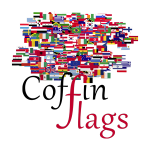Description
 New Caledonia is a special collectivity of France, currently governed under the Nouméa Accord, located in the southwest Pacific Ocean, to the south of Vanuatu, about 1,210 km (750 mi) east of Australia and 20,000 km (12,000 mi) from Metropolitan France. The archipelago, part of the Melanesia sub-region, includes the main island of Grande Terre, the Loyalty Islands, the Chesterfield Islands, the Belep archipelago, the Isle of Pines, and a few remote islets. The Chesterfield Islands are in the Coral Sea. French people, and especially locals, refer to Grande Terre as Le Caillou (“the pebble”). New Caledonia has a land area of 18,576 km2 (7,172 sq mi) divided into three provinces. The North and South Provinces are located on the New Caledonian mainland, while the Loyalty Islands Province is a series of islands off the mainland. Its population of 268,767 (August 2014 census) consists of a mix of the original inhabitants, Kanak people, who are the majority in the North Province and the Loyalty Islands Province and people of European descent (Caldoches and Metropolitan French), Polynesian people (mostly Wallisians), and Southeast Asian people, as well as a few people of Pied-Noir and North African descent who are the majority in the South Province. The capital of the territory is Nouméa.
New Caledonia is a special collectivity of France, currently governed under the Nouméa Accord, located in the southwest Pacific Ocean, to the south of Vanuatu, about 1,210 km (750 mi) east of Australia and 20,000 km (12,000 mi) from Metropolitan France. The archipelago, part of the Melanesia sub-region, includes the main island of Grande Terre, the Loyalty Islands, the Chesterfield Islands, the Belep archipelago, the Isle of Pines, and a few remote islets. The Chesterfield Islands are in the Coral Sea. French people, and especially locals, refer to Grande Terre as Le Caillou (“the pebble”). New Caledonia has a land area of 18,576 km2 (7,172 sq mi) divided into three provinces. The North and South Provinces are located on the New Caledonian mainland, while the Loyalty Islands Province is a series of islands off the mainland. Its population of 268,767 (August 2014 census) consists of a mix of the original inhabitants, Kanak people, who are the majority in the North Province and the Loyalty Islands Province and people of European descent (Caldoches and Metropolitan French), Polynesian people (mostly Wallisians), and Southeast Asian people, as well as a few people of Pied-Noir and North African descent who are the majority in the South Province. The capital of the territory is Nouméa.
Two flags are in use in New Caledonia, an overseas territory of France. Up to 2010, the only flag used to represent New Caledonia was the flag of France, a tricolour featuring three vertical bands coloured blue (hoist side), white, and red known to English speakers as the French Tricolour or simply the Tricolour. However, in July 2010, the Congress of New Caledonia voted in favour of a wish to fly the Kanak flag of the independence movement FLNKS alongside the French tricolour. The wish, legally non-binding, proved controversial. A majority of Neo-Caledonian communes, but not all, now fly both flags, the rest flying only the Tricolour. The FLNKS flag is composed of three horizontal stripes of blue, red and green charged with a yellow disc of a diameter two-thirds the height of the flag centred at a position of one-third the width of the flag, measured from the hoist side. The disc is fibrate black and defaced with a vertical symbol, also black. The blue symbolises both the sky and more importantly the ocean surrounding New Caledonia. The red symbolises the blood shed by the Kanaks in their struggle for independence, socialism, and unity. The green symbolises the land itself and by extension, the ancestors buried within it. The yellow disc is a representation of the sun and the symbol upon it consists of a flèche faitière, a kind of arrow that adorns the roofs of Kanak houses thrust through tutut shells.








Reviews
There are no reviews yet.